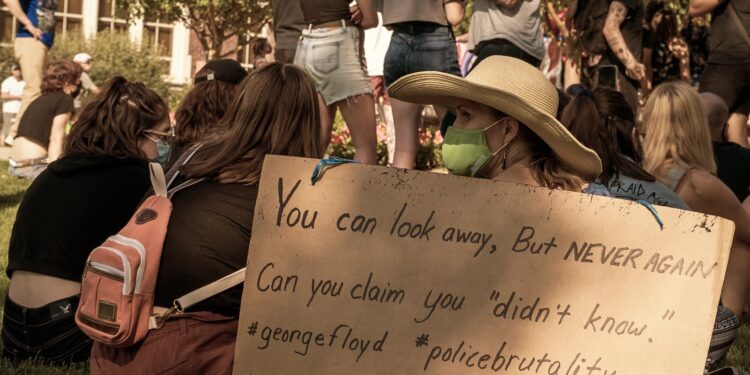Minority Groups Rallied Behind What Slogan?
Throughout the annals of history, minority groups have frequently found empowerment through unifying slogans. One such rallying cry that has reverberated across time and sparked significant social change is “Black Lives Matter”. This phrase isn’t just a slogan; it’s a movement, a call to action, and a powerful reminder of the systemic inequities faced by Black individuals in America.
In 2013, following the acquittal of Trayvon Martin’s shooter, three women – Alicia Garza, Patrisse Cullors, and Opal Tometi – took to social media with their profound sense of frustration and pain. They began using the hashtag #BlackLivesMatter. The phrase quickly gained traction as others shared their own experiences with racial injustice.
The “Black Lives Matter” slogan has since become synonymous with efforts to combat racial inequality and injustice in all its forms. It’s been used as an anthem for peaceful protests worldwide and continues to be a beacon for those advocating for change within society. Whether spoken aloud or emblazoned on banners during marches, these three simple words carry an immensely powerful message: that every life deserves to be valued equally—regardless of skin color.
Definition of Minority Groups
Let’s dive right into understanding what we mean by ‘minority groups’. Generally speaking, a minority group refers to a category of people who are differentiated from the social majority. Such differences could be along racial, ethnic, religious or even sexual lines.
It’s important to note that being a “minority” doesn’t necessarily equate to having fewer numbers. That might seem contradictory but hear me out. For instance, globally women are considered a minority group despite comprising more than half of the world’s population. This status is mainly due to patterns of unequal social and power relations.
There’s also an interesting concept called the double minority. It takes into account individuals or groups who belong to two or more disadvantaged categories. A classic example would be African-American women in the United States who face both racial and gender discrimination.
In sociological terms, minority groups are often given lesser power and representation compared to dominant groups within society. They commonly face issues related to prejudice, stereotypes, and discrimination which can lead to systemic disadvantages.
So you see, defining minority groups isn’t as straightforward as it initially seems! It involves not just numerical count but also recognition of societal imbalances in power structures.

Historical Context of Minority Groups
I’ve often found myself intrigued by the rich tapestry that is our shared history. Particularly when it comes to minority groups, their stories are woven with determination and resilience. These groups have faced unique challenges throughout history, yet they’ve managed to influence society in remarkable ways.
Let’s start from the beginning. Ever since humans started forming societies, certain groups have ended up on the periphery due to various factors—race, religion, or even economic status. They’re known as minorities not because they lack potential or strength, but simply because they represent a smaller portion of the population.
In America, for instance, African Americans were marginalized from the onset of colonization and enslaved for centuries. Despite this brutal past though, they’ve made significant contributions in shaping American culture and society.
Next we’ll look at Native Americans who endured forced relocation and assimilation policies aimed at erasing their cultures and traditions. Yet despite these hardships, Native Americans have persisted in maintaining their cultural identities while also contributing enormously to mainstream society.
Let’s also consider immigrants who came into the US looking for new opportunities but faced prejudice and discrimination instead. However, over time these communities have proven to be vital cogs in America’s socio-economic machine.














